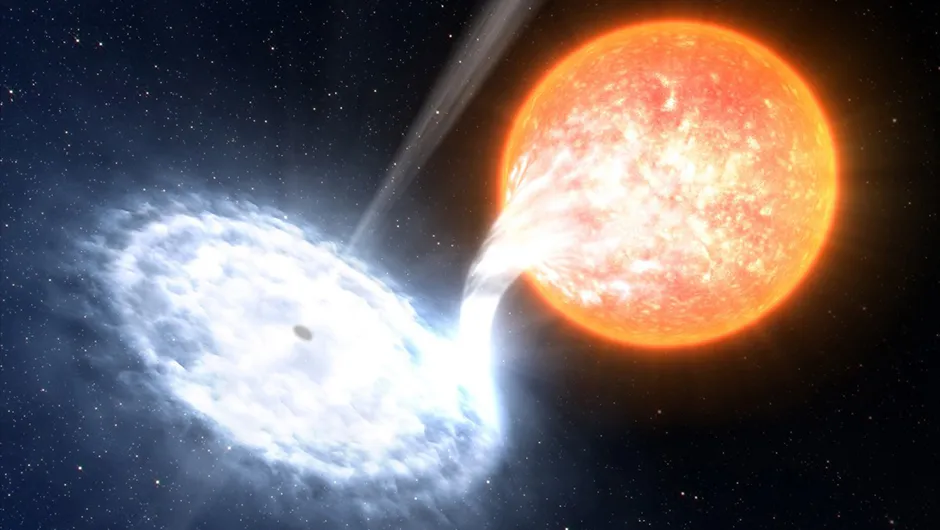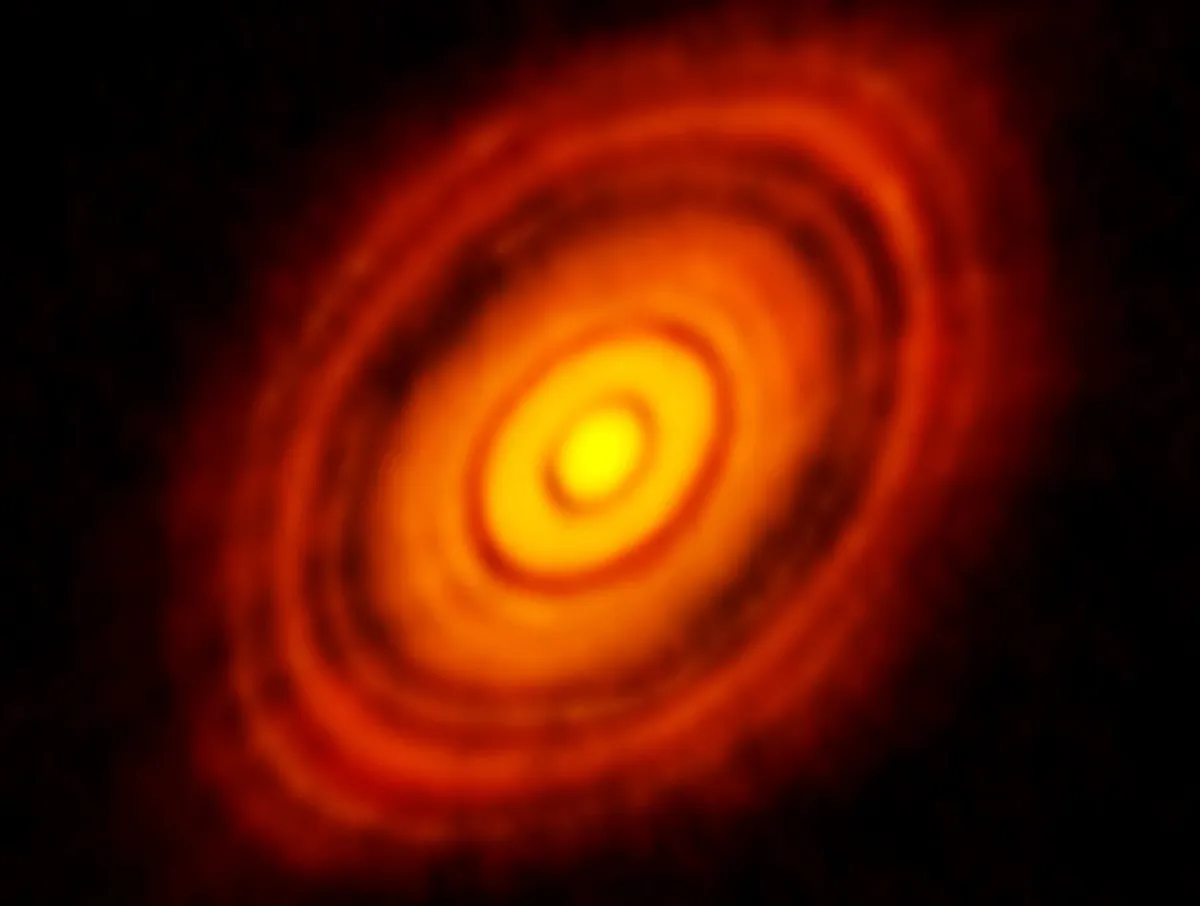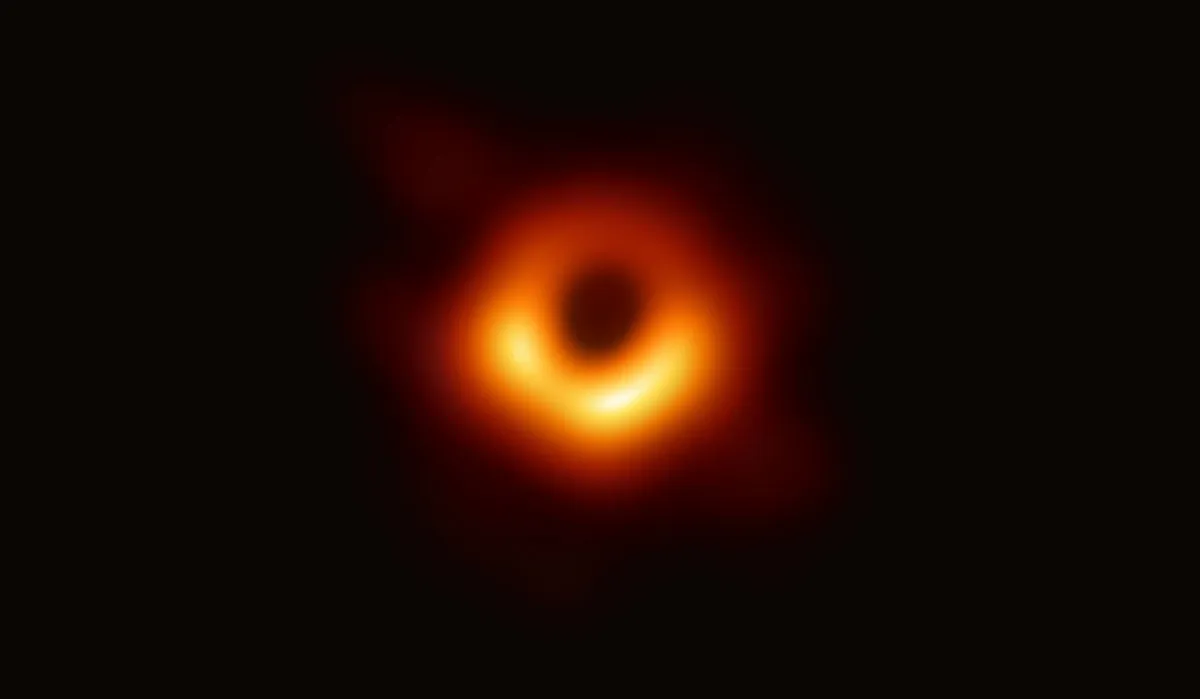An accretion disk is a flattened, circular or elliptical structure that is formed when material falls towards a strong gravitational force, such as a star or a black hole.
Accretion disks are found surrounding a variety of celestial bodies, from relatively small regions of a few thousand kilometres around white dwarfs and neutron stars, to protoplanetary disks around very young stars.
The biggest accretion disks, on the scale of the Solar System, are found surrounding the centres of active galaxies.

The fact that accretion disks exist over a huge range of scales and in apparently very different types of systems suggests some common physics behind their formation.
Because angular momentum is always conserved, small rotations in any in-falling material are amplified as it collapses inwards towards the star or black hole.
This is something like the motion of spinning ice skaters, who speed up as they bring their arms inwards.

A ‘centripetal force’ – an inward-directed force on an orbiting body – then spreads the material out (sideways) to create the broad disk structure, while tidal forces pull it into an equatorial location.
The combination of these two forces makes the shape of the disk wide, flat and thin.
Within the accretion disk, colliding particles convert kinetic energy (the energy of motion) into heat and move inwards.

As these particles move towards the central source, collisions occur more frequently due to the increased density of particles. As a result, they heat up and release X-rays.
This radiation is an important tool for astronomers, as black holes can’t be observed directly – not even light can escape the strength of their gravitiational pull.
The X-rays released from accretion disks can be observed and used to locate black holes.
